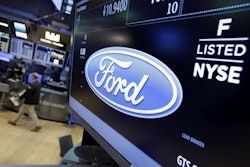Change Management Required
Enough books, scholarly papers, seminars, conferences, conventions, and the like already keep everyone supplied with everything they could ever want to know about change management, so I won’t focus on that here. (If you need a tutorial on change management, it’s easy enough to find. Start with the Internet and simply search “change management.”)
Instead, let’s talk about something I said in the very first chapter and reiterated earlier in this chapter: Be prepared to reinvent yourselves as employees, as a company, and as an industry every three to seven years. That has been going on since long before IoT arrived, and it will continue long after whatever follows IoT emerges.
This much is sure: Jobs and work life will surely change. Thus, at this point, what you need to care about change management is three things: communicate, communicate, and communicate. IoT will impact you; your staff, customers, and partners; other stakeholders; and regulators. Don’t leave any of them guessing about what will come next; communicate early and often. You want to avoid surprises, especially unwelcome ones. And some surprises will surely be unwelcome; for example, some jobs will change, some will be repurposed, and some will be completely eliminated. If you’re planning to let IoT handle remote operations, you’ll certainly want to communicate that fact as soon as possible to those people who currently perform such tasks.
But, as we discussed in the previous chapter, there will be no shortage of new jobs relating to IoT. You need to give people enough notice and then help them position themselves for new opportunities. Another intriguing aspect of IoT transformation is that traditional distinctions become blurry. With IoT, every organization can be a product, service, data, or technology company — or some or all of these concurrently. An organization could shift from one to another and back as frequently as needed to meet customer or market demands. It’s hard to say exactly what the circumstances would be, but with IoT it’s all possible and not difficult to do technically once IoT is in place.
Change as the New Status Quo
Expect technical, workforce, process, and career changes to become the norm. Cultural changes, too, may become a new way of life. In addition, expect changes to salary tiers, seniority, and even pay scales. Is this disconcerting? Probably, but it needn’t be.
The IoT environment should be less rigid and more flexible, and it should enable new organizational constructs. Today, for example, a manufacturing plant’s operating team is physically located at the plant. With IoT that may not be the case. High-speed global IP networks mean that the team can be in any location, as well as spread across multiple locations. Where do you want to work and live? You can reside anywhere, as long as you have access to fast, reliable IP service. IoT can end the days of playing location arbitrage when it comes to people in B2B environments.
Remote operation and automation, for example, reduces the need to locate certain facilities in low-wage locations. Along the same lines, Silicon Valley and Rust Belt companies will now compete for the same talent. This is neither good nor bad; it’s just what’s possible and starting to happen. Employees in B2B companies could reside in low-cost-of-living areas while receiving top salaries. Location becomes a personal choice, not a salary determinant.
I wonder how many startups are now being bought by manufacturing vendors far from their location? How many high-tech execs now work for car and transportation companies in distant regions? With IoT we no longer need to match incentives, expectations, and geography. It enables us to bridge any geographic divide, as well as blur the lines between industries. With so much technology being poured into a modern car, when do we consider it a mobile datacenter and not just a transportation device?
Think about my home, Silicon Valley. Over the past two years, how many technology executives have moved to work for transportation companies both large and small? And can you find a car company that doesn’t have a research or technology hub here? Same goes for the venture capital and mergers and acquisitions (M&A) arms of large manufacturing firms— they all set up shops in the valley. According to a February 9, 2016, press release from professional services firm PricewaterhouseCoopers, the levels of industrial IoT M&A are hitting 10-year highs.1 At the same time, funding for IoT startups is rapidly growing, noted CB Insights in a March 3, 2016, blog post. Increasingly, high-tech companies and industrial or transportation companies co-invest together. I already work with many of them; for example, Siemens and Cisco are investors in Ravi Belani’s Alchemist Accelerator and its IoT track.
No wonder so many industrial company CEOs bring their executive teams to Silicon Valley every few months. Their hundred-year-old business models, ecosystems, and go-to-market strategies are being disrupted, and they’re trying to figure out how IoT technology and business model changes are going to impact their companies and their industries. What business will they be in, in a few years? Who will be their customers? With whom will they compete? Will their companies survive?
Why is this happening? Because the worlds of high tech and industry are converging. Ten years ago, you would never see executives from Rockwell Automation or ABB and Cisco or Microsoft sitting in the same room. We were operating on different planets. Now, these industries are starting to come together (Figure 7.2). We’ve already talked about both groups looking to attract the same talent.
These are just a few indicators of the broader trend. In the next 10 years many industries will morph, new industries will emerge, and the missions and scope of companies will expand or shift. Change is the new status quo.
IT/OT Convergence and Other Workforce Issues
The list of workforce issues that require change management is endless, but let’s start with one I know best: the convergence of information technology and operational technology. It’s almost the first issue to arise in any production situation around IoT.
As IoT multiplies, the networked connections among people, process, data, and things expand exponentially. And as the worlds of IT and OT begin to converge, a culture clash is usually close behind. I highlighted this issue in the recipe for IoT success: “Transform culture along with technology.” OT leaders, for instance, may be confounded when IT schedules a weekend shutdown to update software without regard for production requirements. IT leaders, meanwhile, view OT as resistant to modern technology because of their use of proprietary, closed and specialized systems. IT is deeply concerned with cyber security, but OT has traditionally relied on the physical isolation of its systems for security.
This does not appear, at least initially, to be a marriage made in heaven. However, both parties will need to work together — sooner rather than later. Too much potential value is at stake. The fast paybacks described in Chapter 5 all rely on the data flowing from the plant to the IT infrastructure and then to the cloud. We can’t accomplish these without IT and OT cooperating at the technological, architectural, and, yes, organizational levels.
Despite this potential culture clash, over the past decade or so OT and other LOB functions have increasingly adopted IT-like technologies, such as Ethernet/IP and cloud services. At the same time, IT is becoming more of a business partner, with a better understanding of its role in accomplishing key business and operational objectives. As I said earlier, I often compare this situation to the book Men Are from Mars, Women Are from Venus by John Gray.
Indeed, the solution is pretty similar to Gray’s suggestions on how to improve the way men and women communicate: Get these groups to speak frankly to each other. As the change management agent, you need to urge the IT and the OT people to simply sit down and talk to each other. Then let them argue, hurl accusations, and bring up past grievances from a decade ago; just let it all fly. Eventually, they’ll realize that IoT is too valuable to the business and come to a mutual understanding around IoT procedures. Such session have been conducted in thousands of plants and offices already, and any blood on the floor is easily wiped up, so don’t worry.
From there on it gets easier. Communication is the biggest obstacle, and you’ve just started with the hardest part. After that come negotiation, mediation, and conflict resolution. But because people have started talking with each other, anything can be worked out. You may soon be ready to identify and execute a small, IoT-specific projects that can deliver a fast win. (Flip back to Chapter 5 and pick an example that can deliver a quick payback, perhaps something around remote operations.) Once you have a winning project under your belt, people will readily line up to participate in the follow-on eff orts.
As we focus on the IT/OT convergence and the adoption of IoT, let’s not forget that most of the IoT implementation will happen in the brownfield environments of existing locations or businesses.
Similarly, even while many tasks evolve and become automated, it’s critically important to capture and leverage the practical knowledge both OT and IT practitioners have accumulated over many decades. I’ll use my father- in-law as an example. For decades, he worked as the chief technologist at one of the steel mills. When he retired several years ago, his company asked him to continue as a consultant, even as new generations of managers arrived and implemented automated IoT processes. Why? Because his practical expertise, developed over 40-plus years, was so unique. He knew, for example, how to formulate steel to meet unique specialized requirements. So the company did the right thing and tapped into his knowledge and experience as the foundation of its automated decision systems.
I can list many such examples. So, as your OT experts approach retirement age, make sure their practical knowledge doesn’t disappear when they leave the workforce. Be proactive about documenting and capturing their insights, both in automated systems and by transferring their knowledge to younger workers.
Excerpted from BUILDING THE INTERNET OF THINGS: Implement New Business Models, Disrupt Competitors, Transform Your Industry by Maciej Kranz. Copyright © 2016, Wiley.






















